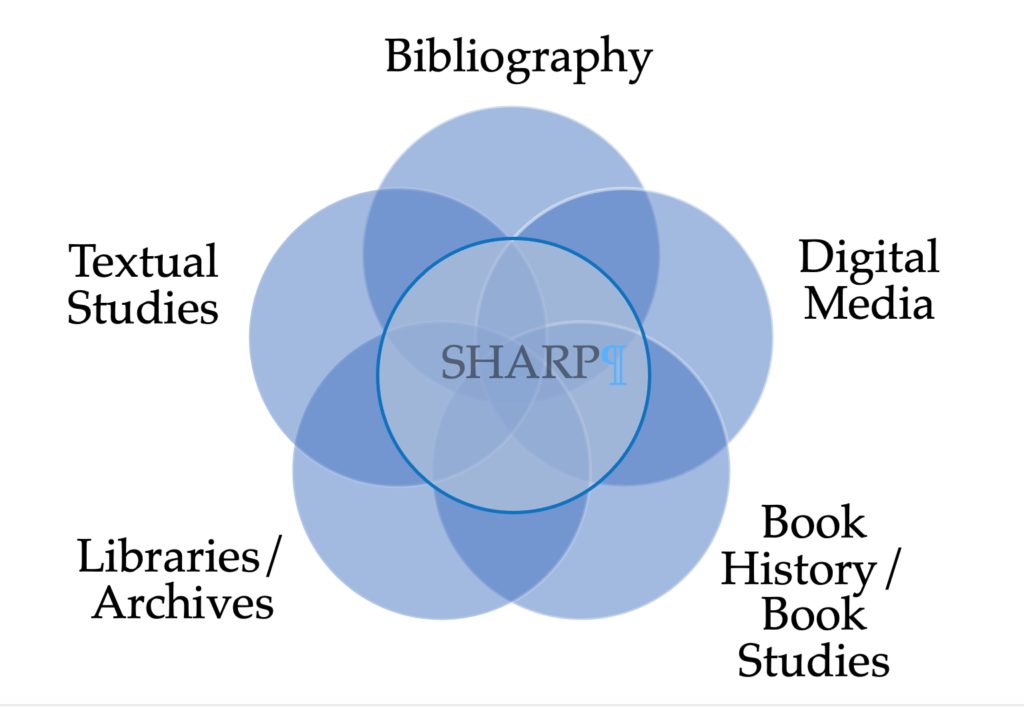Periodically, SHARP News will publish reflections from members of SHARP’s Executive Council regarding the state of the field and ongoing developments of the society. Our president, Shef Rogers, writes this section’s inaugural post.
At the Münster conference last month I was attending a panel on Australian book history at which it was pointed out that I was a living link between SHARP and the Bibliographical Society of Australia and New Zealand, for which I edit that Society’s journal, Script & Print. Apart from feeling somewhat like a tuatara—NZ’s very slow-moving, long-lived lizards that are evolutionarily closer to dinosaurs than most creatures still on this earth—I realized that holding these two roles simultaneously does keep me aware of some of the similarities and differences between organizations that we would all regard as contributing to book history, but that do not always necessarily overlap very much.
In addition to my personal circumstances, the new visibility of the Bibliographical Society of America had also moved me to reflect on how that organization—and the numerous other bibliographical societies—and SHARP complement one another. I had chatted earlier in the year with the BSA’s wonderful Executive Director, Erin McGuirl, about legacy giving as part of SHARP’s Finance Committee discussions. I’d also been a fellow Lab Instructor with Erin at Rare Book School in Charlottesville on two occasions, so we already knew each other, and were able to compare our respective societies on a number of grounds. SHARP and BSA share the aim of increasing the diversity of our memberships, which includes both facilitating participation by non-traditional scholars and seeking to broaden our areas of scholarly interest. SHARP has a more international membership, but both the BSA and the BSANZ have enjoyed growing numbers as well, driven in part by providing venues for younger scholars to present work. All three of these organizations also publish journals, and the journals are probably the most obvious area of difference, with SHARP’s Book History seeking to define and explore the discipline and Lingua Franca bringing some of the best global book historical publications to the attention of English-speaking audiences. PBSA has a distinguished history of bibliographical essays and book reviews, and the BSA also publishes bibliographical monographs. Script and Print is older than Book History, but younger than PBSA, and has traditionally favored historical physical bibliography, often drawing on collections or case studies in Australasia. I do not regard any of these publications as being in competition, but I expect the national or regional structures of bibliographical society journals will continue to face some strains as the world of books continues to globalise. On the other hand, each of these organizations provides valuable nodes of commonality, an engaged local audience for material specific to their geographical base, and forums for discussing what is distinctive about each location. So while we may all be seeking to diversify, I think book history as a discipline already has a built-in structural diversity in the plurality of structures and participants that shape our field.
While I will concede that a sense of nostalgia for the printed book may lie behind some of the growth of scholarly book history organizations, my sense in attending BSA, SHARP and BSANZ presentations is that the energy in all these societies is coming from younger scholars who are interested in how print promotes and excludes, how digital trends both expand and limit the voices that find their way into print. Where I suspect relatively few scholars ever turned to bibliography as a way to change the world (though some certainly turned to it as an alternative to theoretical vagaries), much of the current scholarly conversation about books is aimed at achieving social change. That was one reason it was so heartening to hear book history listed in episode 5 of Netflix’s The Chair among key developments in humanities over the past thirty years, alongside digital humanities, gender studies and critical race theory.
Because book historians LOVE to debate models, consider this graphic of intersecting circles. All the areas identified feed into book history, yet each area has its own history, conferences, and research tools. SHARP helps us see the richness of these intersections, with the precise blend varying over time. The more we can cross-fertilise, the better. The fact that the graphic ends up resembling a flower is actually accidental rather than intentional. I am not pretending that there is some perfectly evolved harmony among these approaches, but rather that we have to ensure that SHARP cooperates and works with all of our constituencies. I think one reason SHARP has ended up in this role is because our custom of allowing local conference organizers to set the theme and content has meant that SHARP’s breadth of interest is constantly being redefined and tested. The current concerns about acknowledging systemic exclusions challenge us as a Society to be open to further redefinitions and voices, as we look ahead to a post-pandemic world. As always, the members of the Executive Council, the Board and I remain open to suggestions and questions to help us sustain and extend the intellectual richness that has attracted us all to SHARP.

Shef Rogers, SHARP President


